
To use this site, please enable javascript

To use this site, please enable javascript
Upon recently having become a member of the Sonardyne group of companies (which is named Covelya Group as of October 2021), it was obvious for the EIVA team to implement support for the Sonardyne Solstice sonar.
Fresh from the compiler, we introduced this at our 2019 EIVA Days events together with the new sidescan functionality implemented in the NaviSuite product line:
We have implemented a Solstice file importer in NaviEdit and NaviModel. This means that the post-processing of Solstice sonar data is fully supported throughout the NaviSuite portfolio, using the raw sonar format with all the benefits this gives, in particular for fusing the data with other sources.
In preparation for showcasing this, we tested out the Solstice sonar in NaviSuite. The specs of the Solstice set our expectations high:
The specs indicate a very high resolution sonar that matches SAS in performance, but perhaps without the downsides of SAS which can often disappoint in real life. As with other high-end sidescan sonars that claim to provide bathymetry, the big question is really how good the bathymetry data is, and whether it can match the high quality of the intensity data.
We got hold of some data sets, and here is how they look in the EIVA NaviSuite software – they speak for themselves – impressive clarity, very little noise and artefacts. In other words, our expectations were met with very, very good data – and approximately 200 m swathe as promised.
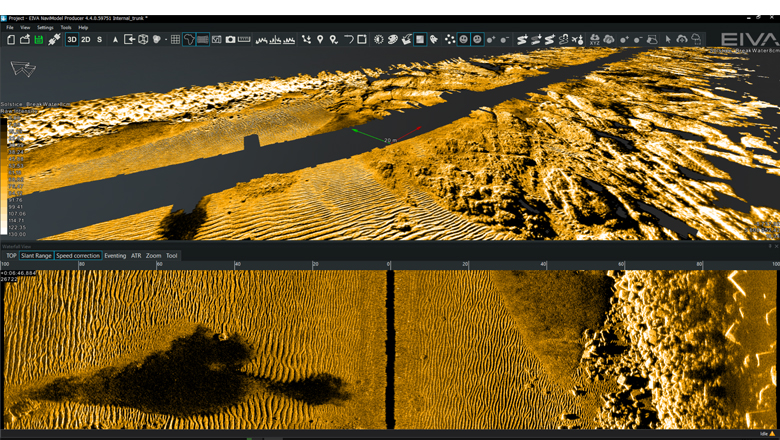
Solstice 200 m wide data covering a breakwater area with sand ripples, rocks etc
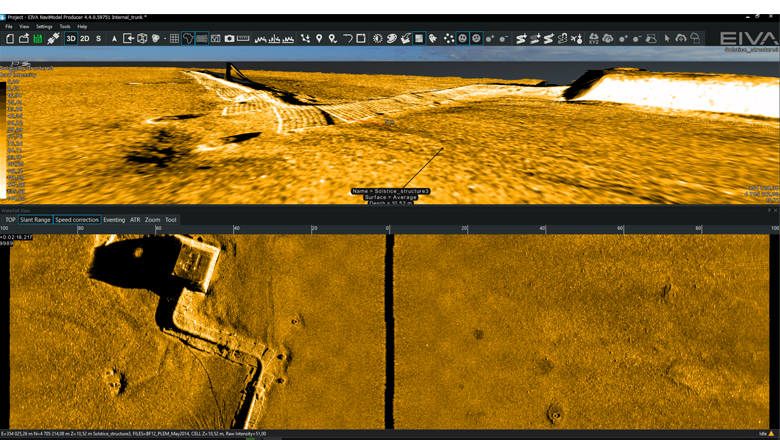
Solstice 200 m wide data over pipeline with mattresses and valve station
So, the sidescan data looks amazing – what about the bathymetry?
Well – in short, it is really good. With 3 cm cells we are talking about a resolution that any regular multi-beam echosounder would envy.
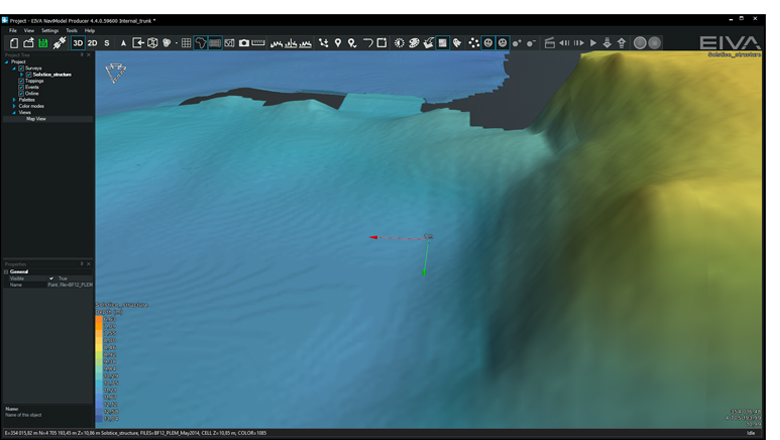
High resolution bathymetry data from the Solstice sonar
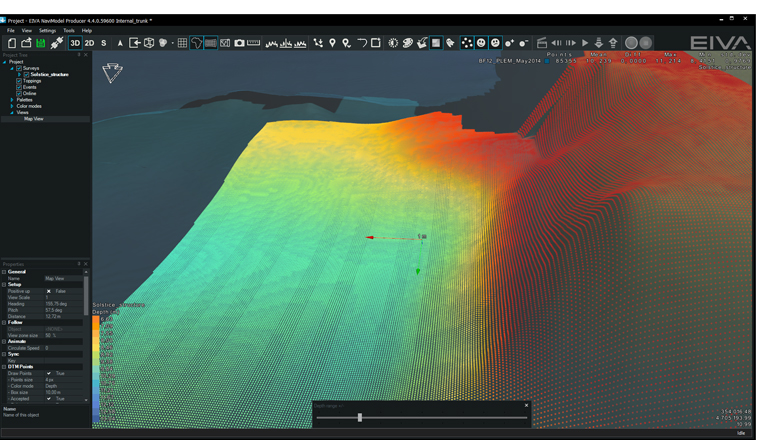
Underlying gridded 3 cm cells / points from the Solstice sonar
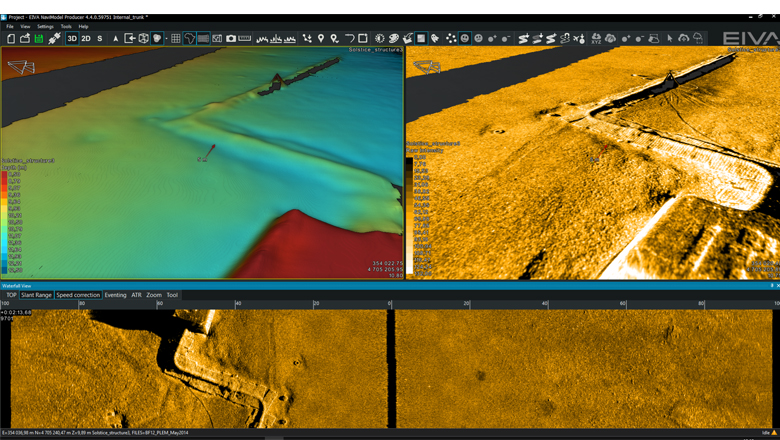
Side-by-side view of depth coloured bathymetry and intensity coloured bathymetry
The intensity data adds a tremendous amount of detail to the high-resolution bathymetry, making the Solstice a sonar that can perform many tasks, and possibly replace other sonars in a lot of cases. The wide swathe makes it very good at any type of seabed coverage, and the exceptional intensity data adds a lot of detail to the bathymetry, which outperforms the backscatter of multi-beam echo sounders.
We were properly impressed – next up is to get our hands on the actual sonar, mount it on the ScanFish and see its behaviour in real world.